
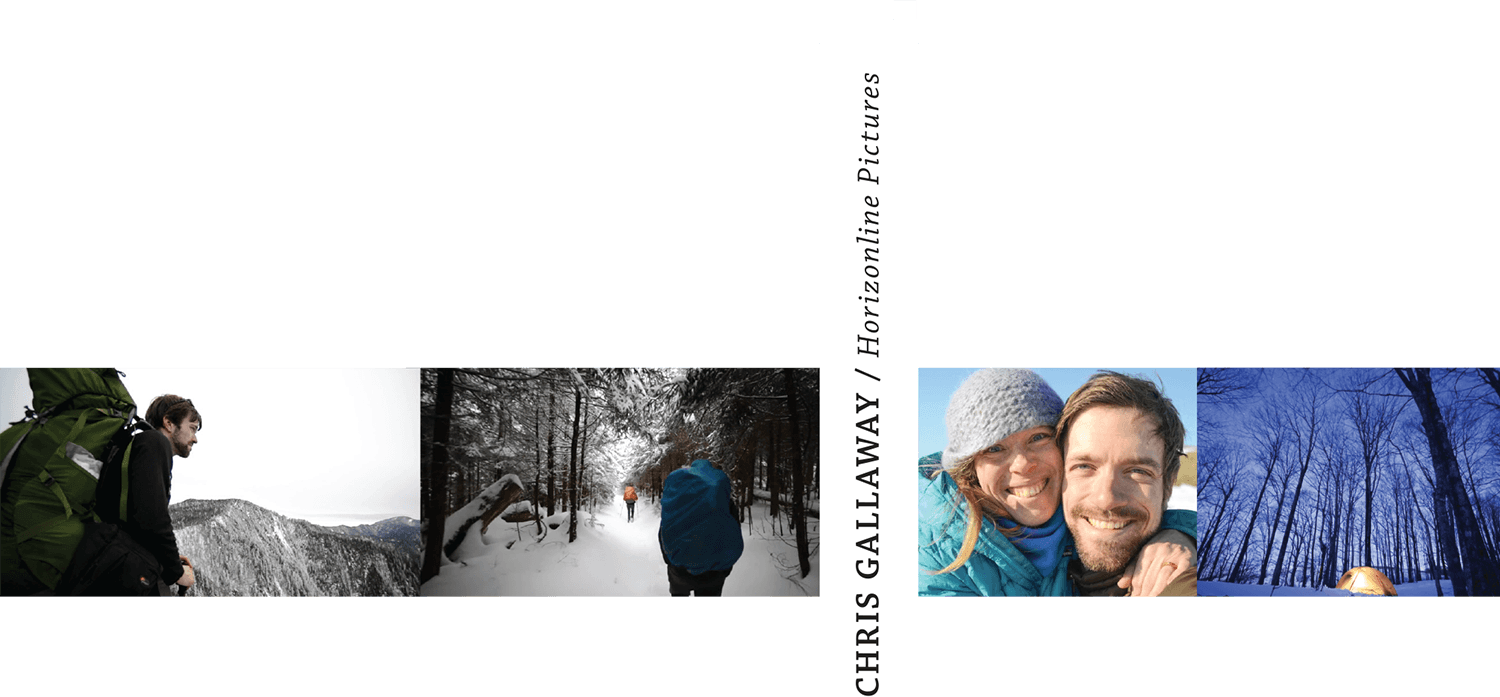

I think I’ve always been drawn to storytelling. I went to an arts highschool for theater and majored in creative writing through college. After college graduation, I made a documentary film called The Green Race Movie, which followed a class five kayak race near Asheville, North Carolina. That was my entryway into independent film production, and I’ve been working at it ever since.


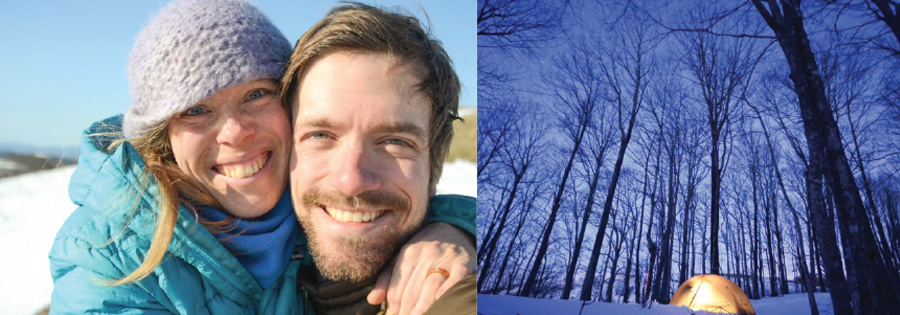
From top: Chris on a shake-down hike in the Smokies while preparing for his thru-hike; Scenes from The Long Start to the Journey

I think I’ve always been drawn to storytelling. I went to an arts highschool for theater and majored in creative writing through college. After college graduation, I made a documentary film called The Green Race Movie, which followed a class five kayak race near Asheville, North Carolina. That was my entryway into independent film production, and I’ve been working at it ever since.
From top: Chris on a shake-down hike in the Smokies while preparing for his thru-hike; Scenes from The Long Start to the Journey
There is value and growth in going outside of our comfort zone to do something that is scary or challenging, and long-distance hiking and backpacking certainly provide that. Every time I go out on a hike with someone to make a new film, I get to see what that person uniquely gets from the Trail. It enriches my life and my experience of the Trail to share it with new people and to see what they are getting from it themselves. I find that a lot of people (myself included) feel that they are their most-authentic selves on the A.T. when the trappings and distractions of society are stripped away. That is a wonderful opportunity and a challenge, and I’m thankful that I get to have this experience in the course of my work.
In 2013, you thru-hiked the A.T. and then made your documentary film The Long Start to the Journey with your wife Sunshine. Since making that first film about the Trail, what have you learned along the way?”
The lesson that I am always learning and re-learning in filmmaking is to stay alert and awake to what the story will reveal to you. It’s a risk to go into a project with too strong an idea of the story you want to capture. That can easily get in the way of the details of the people you are trying to follow and document. The real story of someone’s experience is always richer and better than the ideas or vision you developed in pre-production; so even though it’s important to plan and prepare for a project, you have to hold your plans lightly so that you can tune into the real story as it unfolds.
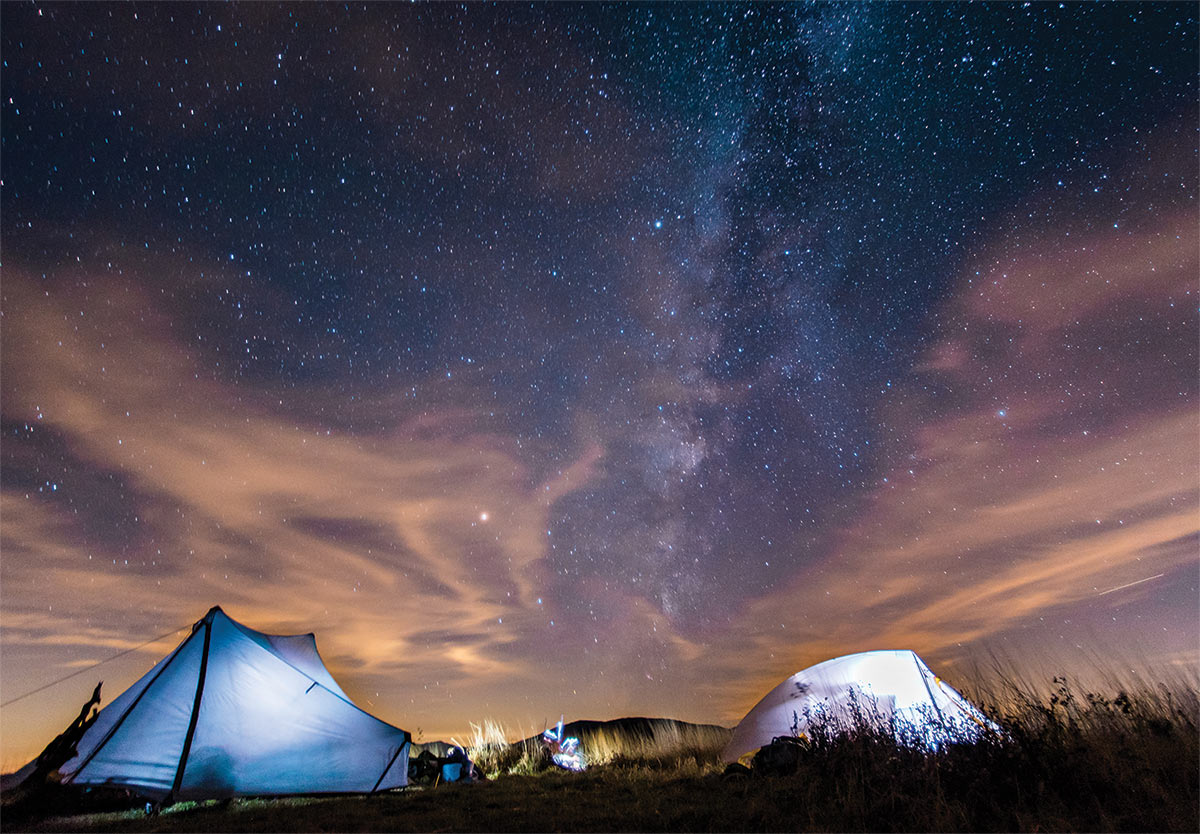
A nighttime scene from the Roan Highlands during the filming of Standing Tall with conservationist Jay Leutze – Photo by Adam Collins/ WACphotography
Since my thru-hike, I have deeply believed that the Appalachian Trail offers essential value and meaning to people in the modern world. The A.T. is counter-cultural because the culture on the Trail is not preoccupied with so many of the things that grab our attention and generate anxiety in mainstream life today. The A.T. is refreshing for anyone who takes the time to step out of the rat race and spend even a moment in the natural environment that it provides. And I believe that no group or organization is doing more to care for and protect the Appalachian Trail than the ATC. The ATC coordinates with and facilitates many other groups, large and small, who are doing important work for the Trail, but as a central hub and vision for ensuring the future viability of the A.T., the ATC is essential. I believe in the mission and focus of the ATC, and so I feel fortunate to get to be a part of supporting their work.
How did you come to collaborate with ATC to create films?
It’s a bit of a long story: During my 2013 thru-hike I met a hiker named Ruben Rosales (Trail name “Chapinlara” or Chapin for short). We went through some tough sections on the Trail together (hip-deep snow drifts in the Smokies…40 mph cross winds and disorienting fog on top of Franconia Ridge), and as often happens on the Trail, we quickly developed a lasting friendship. After the A.T., Rubén wanted to give back, and he joined the board of the ATC as a way to do that. At the same time, he and his wife Valerie supported our work making The Long Start to the Journey film. His reward for donating to our fund-raising campaign was video-production services, and he forwarded this reward to the ATC so that I would make a film for them. This became the first project I worked on for the ATC: a short promotional video featuring a family with young kids hiking in the Grayson Highlands. Following that project, Rubén continued to believe in the benefit that I could bring to the ATC through my video production work, and he has looked for ways to facilitate that. The myATstory series of videos emerged from his vision, and he and Valerie were executive producers on all 10 of the videos in that series. No one is more to credit for the lasting collaboration that I have had with the ATC than Chapin.
Can you describe what goes into the unique style and voice of your film production?
Over the years, I have strived to cultivate an approach that comes across as truthful and authentic. I am intentional about not getting too fancy on the video production side (stylistically with effects or heavy, dramatic music). I find so much drama and interest in people’s stories that I try to take a straightforward and understated approach to each film’s style. In filmmaking, I aspire to the storytelling aesthetic of NPR or certain public television documentaries. It’s certainly not your Red Bull, high-adrenaline-drama storytelling approach.
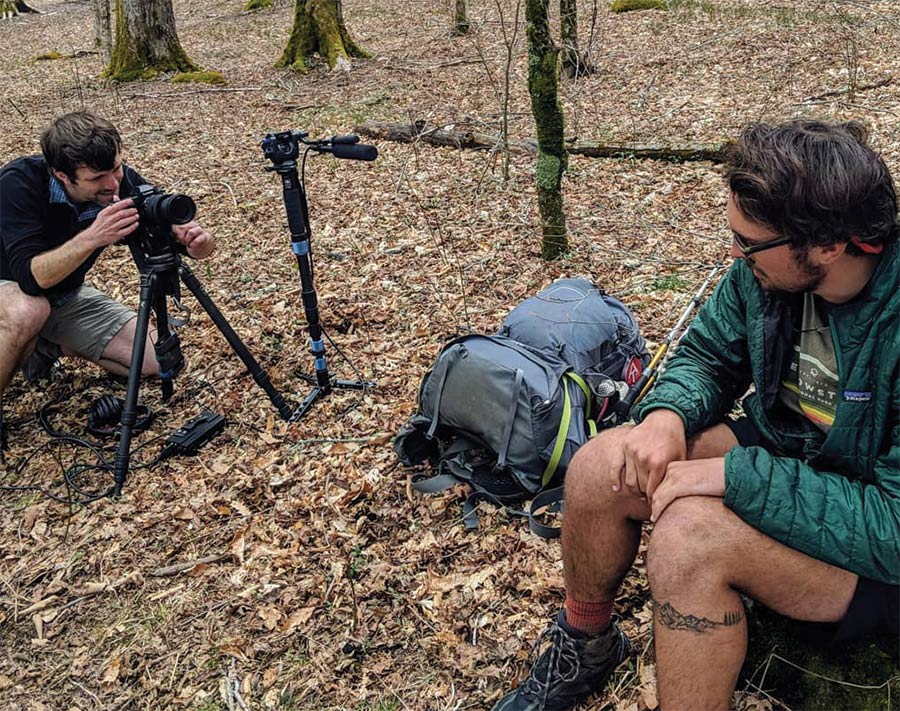
Chris sets up an interview with thru-hiker Tilghman Moyer while documenting Emory & Henry’s Semester-a-Trail program – Photo by Aliese Harrison
A lot of projects are developed months in advance as we plan the story and look for the right pieces to come together for filming. The process of finding the subject(s) for a film, then deciding on a location on the Trail to film, as well as dates that work best for everyone and securing the necessary permits, etc. — all of that can take six months or more to sort through. Once we actually have our filming dates and can capture the raw footage, then it is usually about a two-month turnaround before we have a finished project that is ready to share. During filming, I have a lot of autonomy to capture the story as my creative sensibility leads me, but once we get into editing and post-production it is a collaborative process of generating rough edits and then incorporating feedback from the various branches of the ATC to refine the story. The really satisfying and exciting part of the process is when a story idea (like the Go Dark film) comes together and becomes a fleshed out, real experience that is richer and more-rewarding than anything we could have planned or envisioned. Without fail, the Trail provides experiences and relationships that are deep and true, and I have come away from many of these projects with lasting friendships.
Some of my stand-out memories are: hiking from New York City to the A.T. via the Long Path with Derick “Mr. Fabulous” Lugo and his brother Carlos…spending three days in the Smokies with “All-the-Way,” a Vietnam vet who started thru-hiking long trails in his 60s…enjoying peak fall colors in Shenandoah National Park with Kathi and Steve Kramer, whose son had hiked the Trail… and camping in the Roan Highlands and listening to the inspiring and captivating stories of Jay Leutze who played a pivotal role in a legal fight to conserve that breathtaking landscape.
Your films relay a very intimate quality while maintaining a very clean and professional style overall — how do you create that balance?
I want to tell authentic stories, and in service of that goal I try to keep my approach to filmmaking simple. I intentionally do not accumulate a lot of extra gear or support staff that might distract from or encumber the filmmaking process. I keep the process stripped down and simple. Often the people I work with feel intimidated as we get ready to film together, but once we are out in the field shooting the footage, they relax and are able to be themselves, which is essential for the style of filmmaking that I want to do.
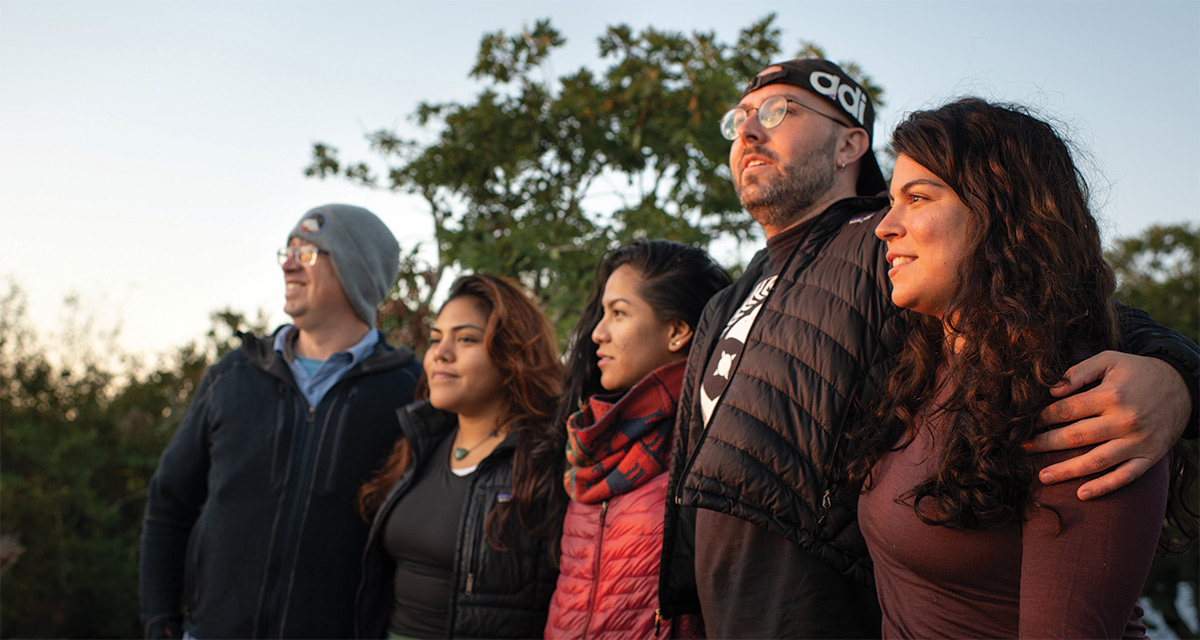
Still image from Go Dark – A Wild East Story (the group takes in an A.T. sunset in Georgia)
Last winter, I began working with the ATC team to imagine stories that would capture the ethos and vision of the Wild East initiative, and one of the first ideas we came up with was to do something about the beautiful starry nights that the A.T. provides. Right away, we had an obvious person to collaborate with in Tyler Nordgren. Tyler is a renowned astronomer and authority on dark skies; so we reached out and asked if he would be our lead on this subject. Once Tyler was on board, we started looking for a group of folks who could come along for the journey and benefit from Tyler’s expertise. We were lucky to connect with Luz Lituma from Atlanta Georgia and her organization LatinXhikers. Luz invited three of her friends from Atlanta along, and at the end of August we all met on the Trail in north Georgia to do a two-night hike together, enjoying each other’s company and the brilliant stars in the sky above.
What stands out about this particular film to you?
This project was a perfect example of what a powerful place the Trail is for building community and friendships. All of us came from such different backgrounds to meet on the A.T. It was wonderful to me how quickly we all got on and began to laugh, talk, and share with each other so easily. There were such good conversations and so much laughter as we hiked. And because we came from such different backgrounds, we had that much more to share with each other. As so often before, I found myself with a group of people on the Trail who I probably would not interact with in the normal course of my life, and I left the Trail having gained a group of friends. I hope that we will reconnect in the future to hike together again.
What message do you want this film to convey most strongly?
Growth and development is progressing so quickly along the East Coast, and the Appalachian Mountains are so attractive to developers for obvious reasons. We still have an amazing resource of wild lands that are focused along the length of the Appalachian Trail, but I think that many people do not realize how vulnerable many of these lands are to development that would adversely impact the A.T. experience. The Wild East vision to protect and conserve broad landscapes up and down the Appalachian Trail can seem massive and daunting as a project to undertake, but certainly no more so than the original vision to build this Trail that would stretch more than 2,000 miles along the East Coast. The original A.T. planners imagined this huge, overwhelming project that took their lifetimes and more to complete. Now we have the Trail in place, and there is an opportunity for our generation to begin the essential work of conserving and protecting larger landscapes along the Trail so that the purity of the wilderness experience is preserved for those who come after us. I hope that the film communicates the importance of protecting the Wild East corridor. The Wild East initiative is an urgent rallying cry to this generation to preserve and protect the wilderness that we currently enjoy.
Favorite moment from filming with Tyler, Luz, and others?
I was watching the sunset while interviewing Adam Stephenson, a gifted muralist who was part of the LatinX group. Adam is an insightful and empathic person, and he began to talk about how surprising it is that we can access this awe-inspiring wilderness experience in under two hours’ drive outside of the rush and mayhem of Atlanta — a place where (in his words) you could have “your breath taken and your life changed a little bit.”